What is Mahjong?
Mahjong is a tile-based game originating from China, often described as a blend of chess, poker, and puzzles. Played by four players (though variations exist for two or three), it involves skill, strategy, and a touch of luck. The goal is to create specific combinations of tiles—similar to forming winning hands in poker—by drawing and discarding tiles in turn. With roots in 19th-century China, it has evolved into a global phenomenon, celebrated for its complexity and cultural significance.
History of Mahjong
Mahjong, one of China’s most iconic games, traces its roots to ancient entertainment traditions. Its tiles are believed to have evolved from earlier games such as horse-riding tiles and paper cards, which themselves share deep connections with Liubo, one of the oldest known board games in Chinese history. These early games, including dice-based activities and card competitions, are intricately intertwined—even sharing a "bloodline" of cultural evolution. Many popular chess and card games, including mahjong, developed through centuries of adaptation from these foundational pastimes.
The exact origins of such games remain debated, but historical records suggest that Liubo dates back to at least the Shang Dynasty (c. 1600–1046 BCE), predating the reign of King Zhou, its final ruler. Liubo involved six bamboo sticks and twelve game pieces, with the sticks functioning similarly to modern dice—a mechanism later adopted in mahjong to determine chance and strategy.
This rich lineage highlights how ancient recreational practices laid the groundwork for mahjong’s intricate blend of skill, luck, and social interaction—a legacy that continues to thrive today.
The exact origins of mahjong are debated, but it’s widely believed to have emerged in the mid-19th century in Ningbo, a coastal city in eastern China . Initially popular among sailors and merchants, it was refined by Chen Yumen, a Ningbo scholar who standardized the rules and introduced the iconic tile set. By the early 20th century, mahjong spread worldwide, with American John Babcock adapting it for Western audiences in 1920s . Today, it’s played in over 100 countries, with regional variations like Japanese riichi, American NMJL, and the competitive World Mahjong Championship .
Mahjong Set of Tiles
A standard Chinese mahjong set includes 144 tiles (or 136 without flower tiles), divided into five categories:
Circles (筒,Tóng): Represent coins, with numbers 1–9.

Bamboos (条,Tiáo): Symbolize strings of coins, numbered 1–9.

Characters (万,Wàn): Depict Chinese numerals 1–9, meaning "ten thousand."

Winds (风,Fēng): East, South, West, North—each with four tiles.
Dragons (龙,Lóng): Red (中,Zhōng), Green (发,Fā), and White (白,Bái)—four tiles each.

Flower tiles (春,夏,秋,冬,梅,兰,竹,菊) are optional and often used for special rules.

Chinese Mahjong Rules
While rules vary by region, the core mechanics remain consistent:
4 players for a game.
All 136 tiles are shuffled face down and 4 square walls are built with 34 tiles each.
The turn order is determined by throwing the dices by the dealer and rotates anti-clockwise.
The dealer leads other players to draw 13 tiles in a clockwise direction around the wall.
At the start of each turn, a player draws a tile or claims the discarded tile of the previous player.
At the end of a turn, a player discards a tile from their hand.
The discard can be claimed by other players to complete chows, pungs, or kungs.
If no claims are made, the turn passes to the next player in anticlockwise order.
A player wins once a winning hand of 4 sets and a pair is assembled.
If no player wins when all walls are depleted, the round ends in a draw.
How to play Chinese Mahjong
Objective: Form a winning hand of 14 tiles (13 in some variants) by combining four sets (pongs, chows, or kongs) and one pair.
1. Basic Setup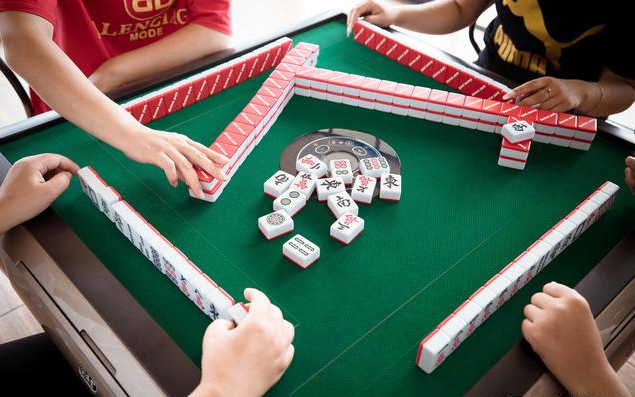
Players: 4 participants.
Tiles: 136 tiles (excluding flower/season tiles in traditional sets).
Walls: Tiles are shuffled and arranged into four walls of 34 tiles each (17 tiles long × 2 high), forming a square in the center.
Seating:
Wind tiles (East, South, West, North) are shuffled and dealt to determine initial seating.
Players sit clockwise in the order: North → West → South → East.
Dealer: Determined by dice roll. The dealer starts with 14 tiles (others have 13) and discards first.
2. Gameplay Flow
Drawing Tiles:
Players draw 13 tiles (dealer: 14) from the wall, beginning at a breakpoint determined by dice.
Tiles are arranged privately, visible only to the holder.
Turn Sequence:
Play proceeds counterclockwise.
On each turn, a player either:
Draws a tile from the wall.
Claims the most recently discarded tile to complete a set (see Combinations below).
Discarding:
After drawing or claiming, a tile must be discarded face-up.
Only the latest discard can be claimed by others.
3. Key Combinations
Pair: Two identical tiles (required to win).

Pung: Three identical tiles. Can be claimed from any player’s discard.
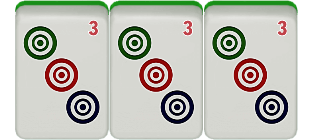
Chow: Three consecutive numbers in the same suit (e.g., 2-3-4 of Bamboo). Can only be claimed from the discard of the player to your left (not allowed in some regional rules).
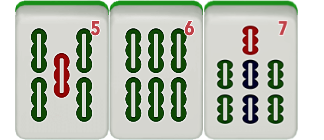
Kong (杠): Four identical tiles. Grants an extra tile draw and must be revealed immediately.
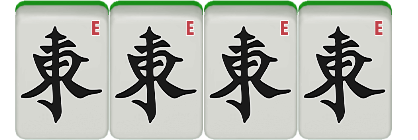
4. Winning Conditions
A player wins by forming four sets (pungs, chows, or kongs) and one pair (total 14 tiles).
Priority for Claims:
Hu: Claiming a discard to complete a winning hand.
Pung/Kong: Claiming a discard to form a triplet or quadruple.
Chow: Claiming a discard to create a sequence (if allowed).
If no claims are made, the turn passes counterclockwise.
5. Special Rules & Etiquette
Kong Bonus: Completing a kong allows drawing an additional tile from the “dead wall” (end of the main wall).
Draws: If all tiles are drawn without a winner, the round ends in a draw.
Regional Variations: Some areas prohibit chows or modify scoring rules. Clarify house rules before playing!
6. Ending the Game
Players agree in advance to play a set number of rounds, points, or hours.
The dealer role rotates counterclockwise after each round.
Special Hands
Thirteen Orphans (十三幺): A rare and prestigious hand requiring one of each of the 13 "orphan" tiles (1 and 9 of each suit, all winds, and dragons), plus a duplicate of any orphan.

Pure One Suit (清一色): All tiles belong to the same suit (e.g., only characters).

Four Kongs (四杠子): Four sets of four identical tiles, plus a pair.

Seven Pairs (七对子): Seven pairs of different tiles.

Mahjong Museums
China Mahjong Museum: Located in Anju District, Sichuan, this museum is the world’s largest, showcasing 1,000+ artifacts, including ancient tiles and interactive exhibits.
Mahjong Origins Exhibition Hall: Housed in Ningbo’s Tianyi Pavilion, it traces mahjong’s roots to Chen Yumen and features rare collections, including jade and gold tiles.
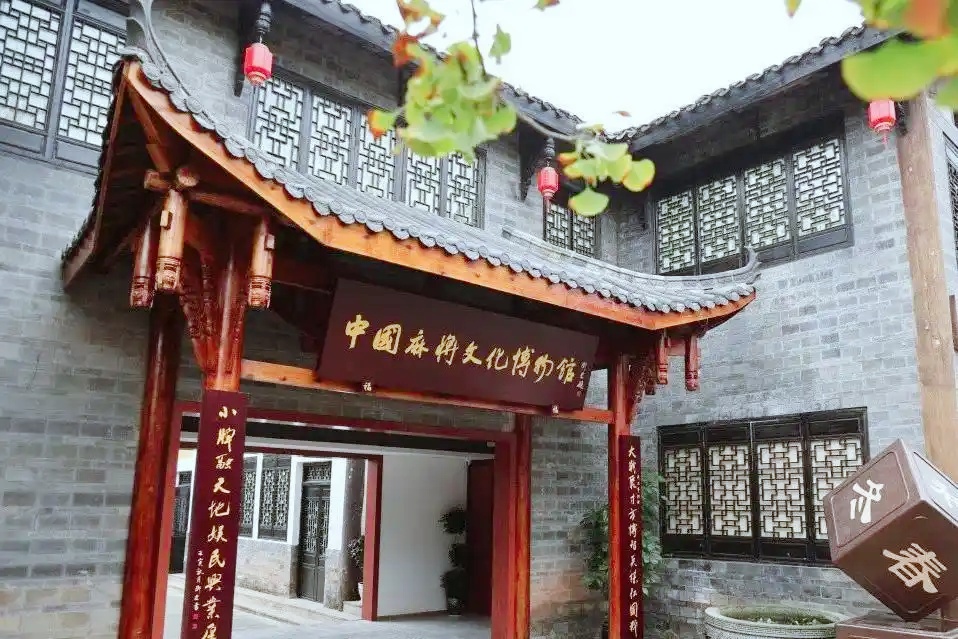
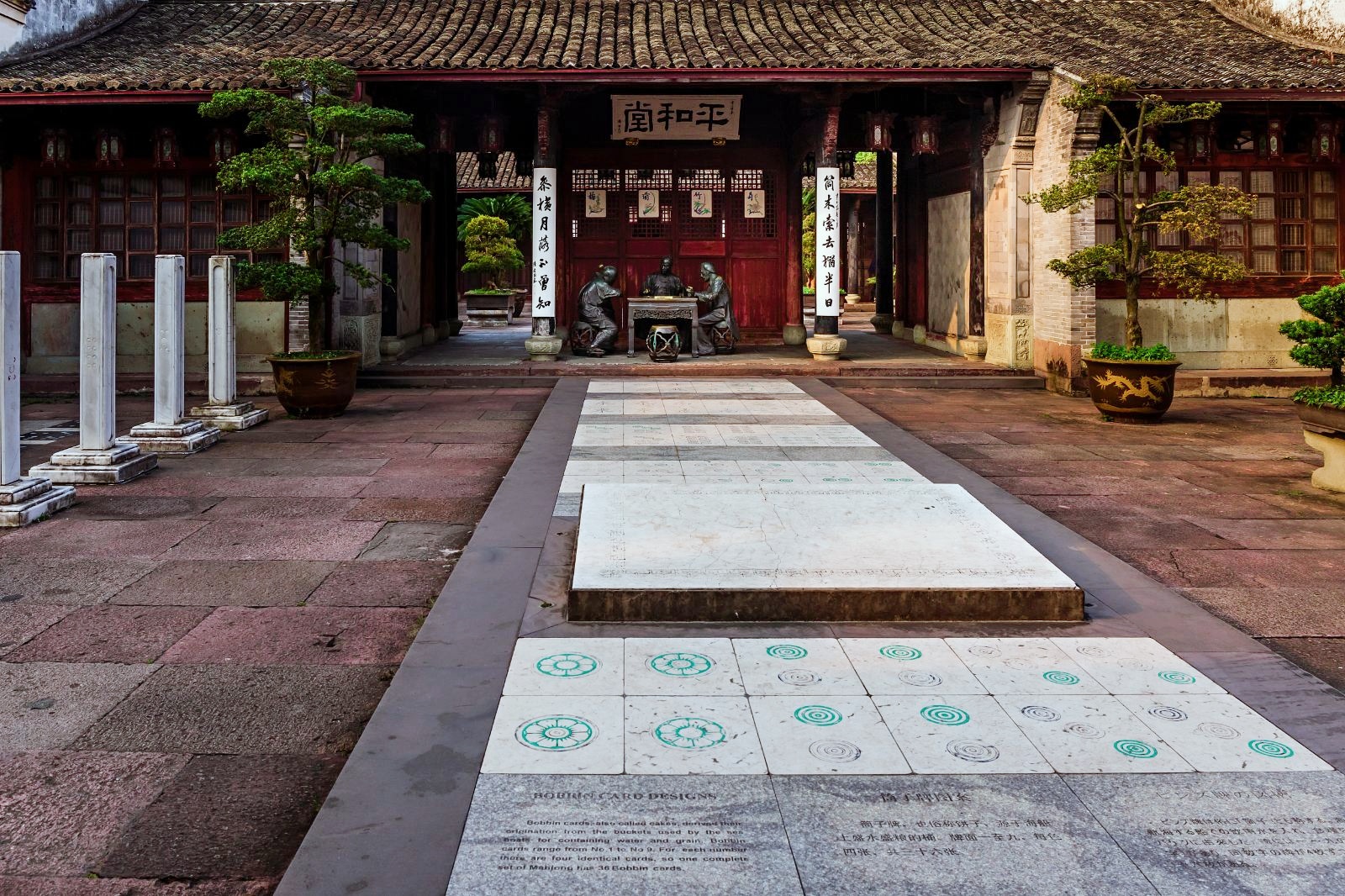
When Do We Play?
Mahjong is a year-round pastime, but it’s especially popular during festivals like Chinese New Year, where families gather for games. It’s also a social activity in parks, teahouses, and community centers.
Where Do We Play?
China: Local parks, teahouses (e.g., Chengdu’s Hemeng Teahouse), and dedicated mahjong parlors.
Abroad: Cultural centers, international tournaments (e.g., World Mahjong Championship), and online platforms like Mahjong Time and QQ Mahjong .
Where to Buy a Mahjong Set
China: Tourist markets (e.g., Beijing’s Liulichang), specialty stores in Shanghai or Guangzhou, or online via Taobao.
Abroad: Stores like Mahjong Central (USA) or Mahjong Direct (UK), or platforms like Amazon. For collectors, seek antique shops in cities like Hong Kong or Tokyo.
Why Mahjong?
Beyond its strategic depth, mahjong is a cultural symbol, fostering social bonds and mental agility. It’s no wonder it’s called "the game of a thousand strategies"—each round is a new puzzle, blending tradition with modernity. Whether you’re sipping tea in a Chengdu teahouse or competing in a global tournament, mahjong offers a window into Chinese culture and camaraderie.




































